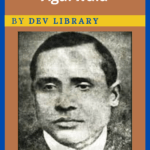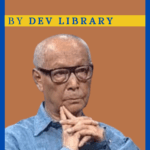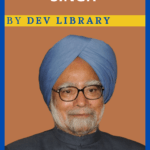The first Assamese entrepreneur is Maniram Dewan. He is someone who had dreamt of making Assam a modern economy through entrepreneurship about a hundred and a half years ago.

Biography of Maniram Dewan
| Name | Maniram Dewan[1] |
| Dare of Birth | April 27, 1806 |
| Place of Birth | Charing, Sivasagar, Assam |
| Parents | Muktiyar Ramdutt (Father), Kaushalya (Mother) |
| Date of Death | 26 February,1858 |
| Place of Death | Jorhat, Assam |
Early Life
Maniram Dewan’s real name was Maniram Dutta Barbhandar Baruah. Maniram Dutta Barbhandar Baruah was born on April 27, 1806 in Charing in Sivasagar district to a Kayasto family. Maniram’s ancestors came to Assam from Kannauj in the days of late Suhungmung or Dihingia Raja (1497-1539). Maniram’s father Muktiyar Ramdutt served as the Dulakasharia Baruah of Ahom king Kamaleshwar Singha. Maniram’s mother Kaushalya was the daughter of the Barbhuyan dynasty.
Born in a turning point, Maniram Dutta Barbhandar Baruah attacked Assam when he entered his teens from childhood. The Ahom officers of that time were fleeing to different parts during the Assam attack. Maniram Dewan’s father Ramdutt Dulakasharia Baruah also took shelter in Silmari in Bengal with late Purandar Singha to save his life. And this is where Maniram’s primary education began under the supervision of domestic teachers. Dewan was later educated at Goalpara after Ramdutt Dolaksharia Baruah was shifted to Goalpara. Maniram introduced his brilliant qualities in almost everything like geography, history, economics, politics etc.
Maniram was a very clever, political and administrative man with his brilliant qualities. It was because of these qualities that Maniram Dutta Barbhandar Baruah developed an cordial relationship with the British who came to chase the standards. Maniram Dutta Barbhandar Baruah was the guide of British Commissioner David Scott who came to Assam during the first Anglo-Burma war from 1824 to 1826. Maniram, who had a great knowledge of geography, took British Sahabs to different parts of Assam and imparted all the knowledge to the British. Maniram provided various information about Assam to British sahabs(lords). For which he became a favourite of the British.
Maniram Dutta Barbhandar Baruah was the medium of communication between Swargadeo Purandar Singha and British rule after Swargadeo Purandar Singha was established as the king of British rule in Upper Assam on March 9, 1833. At that time he was also called “Kalita Raja” by all.
Also Read : Biography of Kumar Bhaskar Varman
Professional Life & Achievements
Importantly, it is because of the efficiency of Maniram Dewan, In 1828, Captain Neuville, a political agent from Upper Assam, appointed him as The “Sirstadar-Tehsildar” of Upper Assam. Maniram Dutta Barbhandar Baruah, appointed as Sirstadar-Tehsildar, reflected his performance and introduced new methods for revenue collection. The new revenue policy introduced by Maniram Dutta Barbhandar Baruah resulted in the increase in the revenue of Upper Assam from Rs 38,836 in 1827-28 to around Rs 1 lakh in 1829-30. Maniram, who has been able to praise the British through his skills, also praised the British for being able to chase standards from Assam and did not support Assamese youth who rebelled against the British who were fighting in Assam.
Maniram Dutta Barbhandar Baruah lost the post of Sirstadar-Tehsildar of Ujjain Assam after Purandar Singh lost the state. However, Maniram Dutta Barbhandar Baruah later held the charge of Mouzadar(an officer in charge of a fiscal division) of Serekapar, Konwarpur and Meteka Mouzar in Sivasagar district. In 1839, the British appointed Maniram Dutta Baruah as the deity of Assam tea company at a monthly salary of Rs 600. And since then he has been known as ‘Maniram Dewan.‘ He performed his duties with concentration by being appointed as the dewan of Assam Tea Company. The tea company under his leadership was improved. But in 1844, the British appointed a second dewan in the Assam Tea Company and reduced the salary to Rs. 200. As a result of this eccentricity Maniram resigned as the dewan of Assam Tea Company in 1845.
Importantly, Maniram Dewan was one of those involved in the discovery of tea trees in Assam. Maniram Dewan was the man who helped Robert Bruce, who is said to be the inventor of tea in Assam, indirectly discover the tea tree. Maniram Dewan informed Robert Bruce about the tea tree after he came to know about the tea tree from Singfau Gamjan. Samuel Weldon author of the book ‘Tea in Assam’, has termed Maniram Dewan as the real inventor of Assam’s tea. “The first attempt to compete with the Britishers was made by Maniram Dewan, who is regarded as the first Indian discoverer of indigenous tea plant in Assam.” The Maniram Dewan relationship is mentioned this way in the book “Tea Industry in India” .
The first Assamese Tea Farmer
The aftermath of Maniram Dewan resigning as dewan of Assam Tea Company in 1845, Maniram established two gardens in Chenglung and Senimara in the pattern of the British with the result of nearly a decade of tireless effort and perseverance. Dewan became the first Assamese and Indian tea farmer after establishing two tea gardens. He had a lot of experience working as a dewan of Assam Tea Company for which he achieved impressive success by opening a tea garden. Maniram Dewan’s tea leaves are appreciated among all.
But the important thing is that the British were alarmed by Maniram Dewan’s success and devised various tricks to destroy his tea leaf business. As a result, understanding the imperialist and power-hungry character of the British, Maniram Dewan developed a feeling of resentment towards them. Dewan first made a formal petition in Assam and tried to reestablish Ahom rule in Assam. But the British rejected his appeal.
Sepoy Mutiny & Maniram Dewan
Maniram Dewan later played a key role in spreading the 1857 nationwide Sepoy Rebellion against the British in Assam as well. It was under the leadership of Dewan that everyone came together in Assam to launch a revolt against the British. At that time, at Maniram Dewan’s advice Piyali Baruah has taken the lead in the work of providing help to Indian sepoys in Assam and collecting weapons. Along with the take, Bahadur Gaon budha, Farmud Ali, Dutiram Baruah, Mayaram Nazir, Mahidhar Muktiyar etc. all of them also raised their hands in the anti-British rebellion in Assam .
But unfortunately a letter written by Dewan was recovered from Kolkata about the revolting tactics against the British. As a result, the revolt against the British ended and British authorities arrested Maniram Dewan who tried to start a awakening against the British and threw him into Alipur jail.
Maniram Dewan later brought to Jorhat by ship from Kolkata at the end of 1857 to complete all the trials. The trial was conducted by Principal Assistant Charles Hallroid of Sivasagar. Maniram Dewan as well as Piyali Baruah were sentenced to death for sedition after the trial was over. Maniram Dewan and Piyali Baruah were publicly hanged on February 26,1858 on the middle floor of Jorhat city. The news of the death penalty for the once highly prosperous 51-year-old Maniram Dewan could not be disturbed by ambition, prudence, courage and confidence in freedom. Maniram Dewan became the first martyr of Assam in the Sepoy Mutiny by lighting a fire of rebellion for the country’s independence.
Conclusion
Maniram Dewan, who has witnessed various events on various occasions, faced with various situations at different times, collected many historical facts and revived his experience and wrote “Buranji Bibekratna” because in childhood he saw the rule of the King of Ahom, saw the nuisance of quality in Ali Domoja in childhood and adolescence, and he was also one of the witnesses to the arrival of the British. Dewan was also a studying person. The Buranji Bibekratna he wrote is an important content book of Assam history. This history book was originally written around the Ahom era.
Importantly, in this book, various Assamese languages as well as Assamese history reading Chanakya’s experience and the history of Assam already composed, he decided to write the history of Assam.
In his history, mainly written with the centered on the Ahom era the king-minister, along with various descriptions of the satra sabha, the words of the common man and the small narratives also found a place in Persian, Urdu, Bengali, English, Sanskrit etc. languages are also applied.
Dewan also wrote various articles on the Kolkata paper “Samachar Darpan”. According to a report, Maniram Dewan is the first Assamese to write articles in the English paper in London. This article was written in English with the focus of tea industry and tea cultivation in Assam.
Dewan was not only a freedom fighter and entrepreneur but he was also a pathway to take Assam on the path of progress. Even if he dies at a very young age, he will continue to be the glow of a brilliant Assamese bright fighter for Assamese.
FAQ
1. When and where was Maniram Dewan born?
Ans: He was born on April 27,1806 at Charing, Sivasagar, Assam.
2. What was the original name of Maniram Dewan?
Ans: The original name of Maniram Dewan was Maniram Dutta Barbhandar Baruah.
3. What is the notable work of Maniram Dewan?
Ans: Notable work of Dewan is ‘Buranji Bibekratna.’
4. What is the occupation of Maniram Dewan?
Ans: Dewan, Tea cultivator.
5. Who is called the first tea planter of Assam?
Ans: Robert Bruce.
6. Who is the first tea farmer of Assam?
Ans: Maniram Dewan is the first tea farmer of Assam.
7. When and where did Maniram Dewan died?
Ans: He died on 26 February 1858 at the age of 51 at Central Jail Jorhat.
8. How did Maniram Dewan died?
Ans: He was hanged by the British for conspiring against them during the 1857 uprising.
9. Who was hanged along with Maniram Dewan?
Ans: Lieutenant Piyali Baruah was hanged along with Dewan.

Hi, I’m Dev Kirtonia, Founder & CEO of Dev Library. A website that provides all SCERT, NCERT 3 to 12, and BA, B.com, B.Sc, and Computer Science with Post Graduate Notes & Suggestions, Novel, eBooks, Biography, Quotes, Study Materials, and more.









I always was interested in this topic and stock still am, regards for putting up.